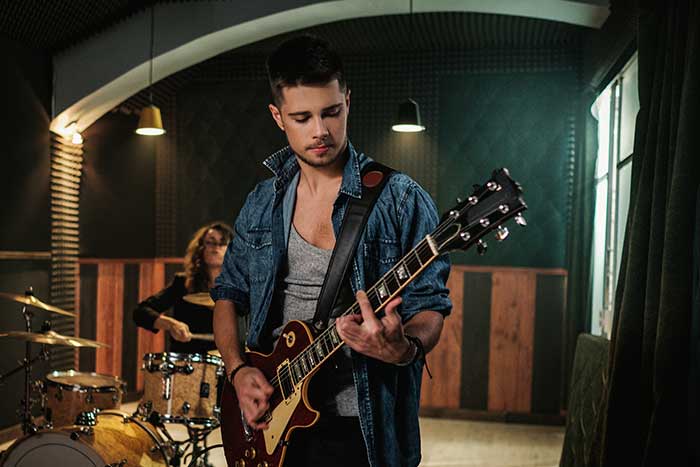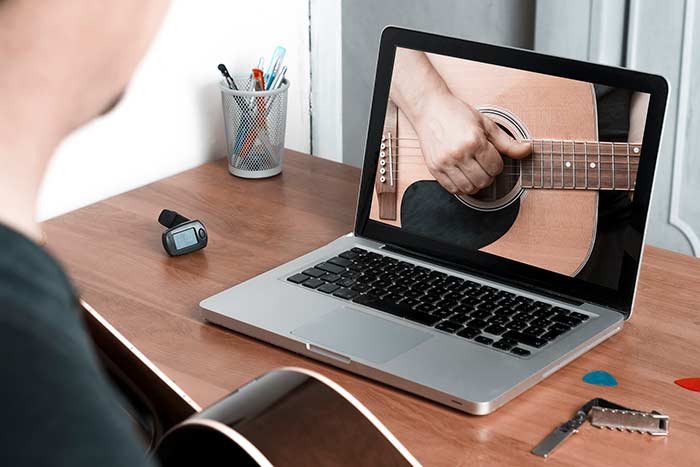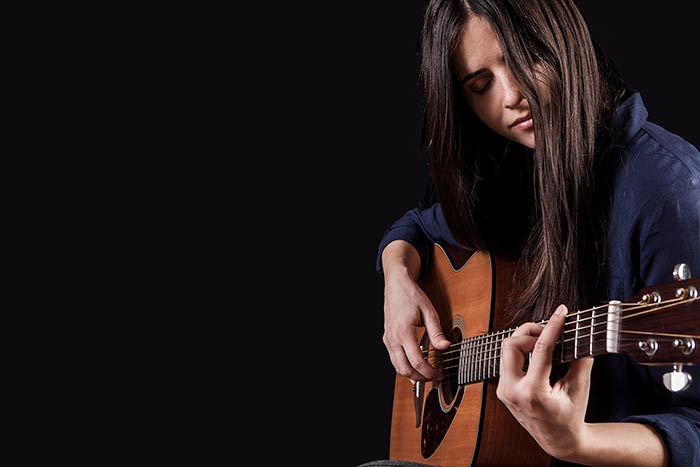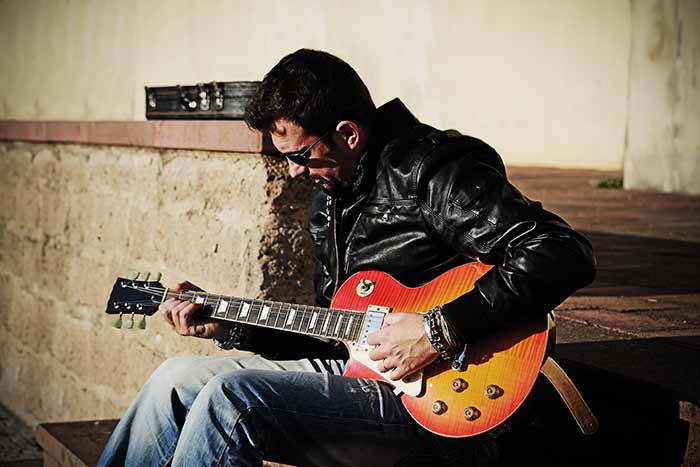Learn The Songs!
Sounds obvious, but you’d be surprised at how many people breeze over this and worry too much about all of their different preset changes or buying all sorts of gear to use! Everyone has their own way of learning songs for a gig, so find what works for you and make that your routine leading up to a gig. Personally, I like to start going over the setlist as early as possible to allow the material plenty of time to sink into both my brain and muscle memory. My goal is to always be at a stage where I don’t have to think too much by the time the gig comes, that way I can be on autopilot and enjoy playing the set. If you get to the gig and you’re finding yourself constantly trying to remember what the next chord is or what section of the song you are in, you probably haven’t allowed enough time!
Different gigs demand a slightly different discipline when preparing. If it is a cover gig playing top 40 or popular songs from existing bands, then I like to chart out all of the songs into leadsheets and have them displayed on an iPad, to show all the sections laid out across bars and any important riffs/lead lines notated to show where I will need to play something specific. This can be fairly short hand and simple – just showing the chord names above bars, or more complex where more detail is required. This will also allow me to change the key of each chart when necessary when playing across multiple bands and multiple singers, leaving me with less effort in the long run once the chart has been transcribed at the beginning of the learning process.
For a gig where I am playing with an original artist (usually a shorter 30-45 minute set) I much prefer to play this all by memory, and not have any iPad’s or a music stand in front of me, so the learning process needs to start sooner! Although there is less music to learn upfront, there is usually more of a focus on “performing”, meaning visually the band needs to be getting into it a little more to give a visually appealing set. This really does require the music to be well settled into the memory, so allow plenty of time for this through constantly running the set at home.
Is Your Guitar Gig Ready?
Another very important factor to keep in mind when preparing for any gig as a guitarist is the condition of your guitar – does it play in tune and is it reliable? I usually like to restring any of my guitars that I use regularly every 2-3 gigs to avoid any string breakages mid set, and also to give the best sound. Newer strings will not only sound clearer and feel better to play, but will also have much better tuning stability which is always essential when performing. A simple restring and clean is easy enough to do at home by yourself, although you may need a setup done to your instrument from a professional if it is in need of a bit more TLC. A guitar luthier will be able to check the neck angle, adjust the intonation and make any other necessary adjustments to your instrument to ensure that it is in tip top playing condition by the time you step on stage, and will make you feel much more comfortable during your performance. If it has been a while since your guitar has had a setup done, take it to your local guitar tech or music store to get it playing smoother than ever.
Sound Selection
Depending on the style of gig you are playing, sound selection will be an important factor to consider in your prep leading up to the gig. If you are playing electric guitar in a band, think about what different distortion/overdrive sounds you will need from song to song or section to section within songs, and also what sort of ambient effects you will need to trigger like reverbs and delays. Also think about how you will be generating these sounds – from different pedals on a pedalboard or an all in one unit like a multi-fx pedal or an amp modeller like the Line 6 Helix.
If you’re playing acoustic guitar in a duo with a singer, this will probably require a simpler setup, but will still take some thought in terms of your tone! For example, will you be plugging straight into the PA or be using an acoustic guitar amplifier? Do these units have EQ and reverb controls that you would need to sculpt your sound? Or perhaps you will need to use some pedals also such as a looper or a stomp box to create a bigger sound with just two people?
Rehearse
What you would probably think of as another obvious step, rehearsing should occur once you have learned the songs at home by yourself, which is another thing that many people do not do! In order to get the most out of a rehearsal with your band mates, a decent amount of your own personal practice needs to be done at home in your own time before you can be confident enough to play with other people. I always look at the first rehearsal as my deadline to learn the songs, not the gig, that way the songs are at least 90% there by the time you start rehearsing which gives you the opportunity to iron out the final kinks as a group that you may not have encountered at home by yourself. There is really no rule to how often you should rehearse. For experienced musicians who are playing a cover gig together, one rehearsal is often enough. For a band who have their first ever album launch approaching, they may want to rehearse on a weekly basis in the months leading up to the gig. The correct amount of rehearsal will be whatever makes you the most comfortable by the time you play the show.











